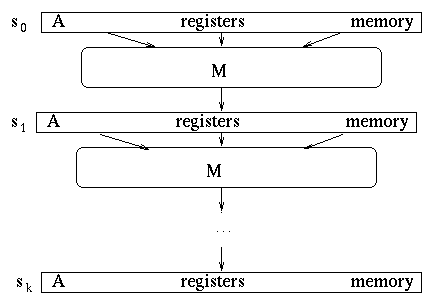Circuit Satisfiability
- A circuit is satisfiable if for a given input, the result is 1.
- This is satisfiable (x=1, y=1)
-

- This is not satisfiable
-

- If you can show that a circuit is not satisfiable, you can eliminate
it from your architecture and replace it with a 0.
- Given a boolean combinational circuit composed of AND, OR and NOT
gates, determine if the circuit is satisfiable. (CIRCUIT-SAT)
- One approch is if there are n inputs, try all 2n possibilities
- This is defniately not a polynomial time algorithm.
- But given a set of inputs, we can check to see if they are correct in linear time.
- So this problem is in NP
- This is 1/2 of the proof to show that it is NP-Complete
- The second half (showing that every problem in NP-Complete can be reduced to it) goes as follows
- A program consists of a memory store of the state (pc, registers, memory, ...)
- Let M be a circuit implementing a computer.
- Let A be the verification algorithm for any problem in NP
- Let C be the certificate
- A runs in polynomial time, and produces an 1 if C is correct, or a 0 if the cirtificate is incorrect.
- Thus there are a series of k steps that M must perform using A to compute if C is correct.
- Build a circuit to do this. (This is the reduction)
-

- This circuit can be constructed in polynomial time
- If this circuit is satisfiable, then the memory where C is stored
will contain the answer to the problem we started with
- Thus this is a polynomial time reduction of the problem to
CIRCUIT-SAT
- And thus CIRCUIT-SAT is in NP-Complete
- This circuit can be constructed in polynomial time
- If this circuit is satisfiable, then the memory where C is stored
will contain the answer to the problem we started with
- Thus this is a polynomial time reduction of the problem to
CIRCUIT-SAT
- And thus CIRCUIT-SAT is in NP-Complete


